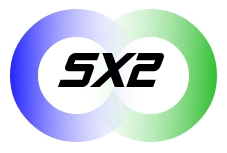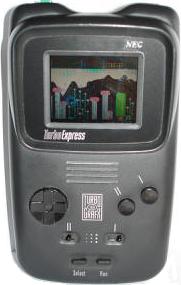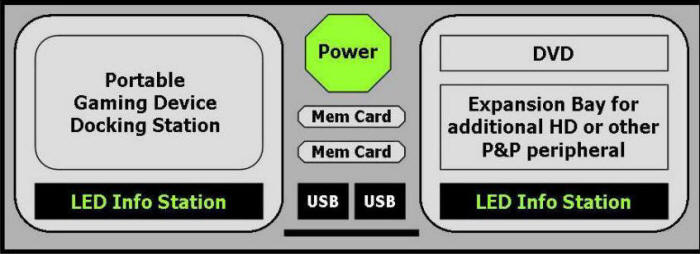The SX2 : A New Gaming System Concept
Author : Marriott_Guy
Date : 15-Jul-09
|
|
I am the first one to admit that I was wrong about my initial impressions on handheld systems – they are not just jealous little rug rats of their technically superior big brother consoles. They do have their unique appeal and I have found that this attraction was not limited to the specific ‘handheld fan-boy’ target audience. I have learned that console gamers of all ages typically have a portable system or two in their back pocket and enjoy the gaming experience on the small screen just as much as they do with a title being displayed in Hi-Def on their 56" LCD. The drivers of this cross-over enjoyment tend to focus on three main areas – portability, convenience and unique software releases. I admit that these items were also the primary reasons for me changing my tune regarding these ‘mighty-mites’ (I finally ‘get it’!). But this personal admission/discovery is not the point of this article. Having the best of both worlds is my focus along with my hardware solution.
|
 |
|
While hanging out at the Memphis International Airport during a layover, I found myself pondering a very simple question – why had I been so reluctant to test out a handheld system in all my years of gaming? Being a console hardware fanatic, I initially thought the technical limitations of the portable machine would be the primary culprit behind my former ‘handheld racism’ beliefs. In reality, a much more intimate ‘friend’ turned out to be the nemesis – my OCD condition, or ‘tendencies’, as I prefer to phrase it. |
| I am not the type of player that has 18 games going at one time with a slew of carts/CD cases strewn all over the floor in front of my Toshiba DLP. I am definitely a ‘focused’ gamer – I like to get very involved with one game and primarily play it in its entirety. This personal fact, coupled with my preference for the superior graphical capabilities that a console system provides, is the crux of my anguish. I spend 95% of my game time with console releases, due to their (usually) heightened content and superior visual/audio output. If I am going to get engaged in a title, I want my time to be invested in the best technology has to offer (for the time period). I realize that the fun factor and not the bells and whistles are what make a software title truly successful (no need for that sermon playa’s – you would be preaching to the choir). Sure, there are console/TV adaptors that will deliver my handheld output to the big screen, but I want the is all – the technologically advanced console experience with the ability to take it on the road (along with my game saves) to continue my adventure. I can’t do that with today’s Next-Gen systems.
There have been systems that have allowed this in the past, most notably the NEC Turbo Express and the Sega Nomad / MegaJet. These were released after their parents (NEC Turbo Grafx 16 and the Sega Genesis) and were the byproduct of enhanced electronic engineering/development – same software format, same system, just squeezed into a smaller box. The problem is that newer technology was arriving on the scene as both of these were released. With all of the strides that the video gaming industry has made in this technical area, why can’t they do that today right out of the box when it is released? This is my idea, and the point of this writing. Develop one system that provides the advanced offerings of the console and includes a portable, compatible gaming device to continue your gaming experience on the road or out on your back patio.
|
 |
|
Let’s take a look at the design/workings of this fictional machine, which I will refer to as the SX2. Now bear with me since I am not a graphic designer at all – the referenced picture I threw together using MS Publisher and is only meant to point out a few features. Also please note that I am not an electrical engineer and do not get into any detail in this arena (though all are plausible). Also, cost is not a factor in this exercise (but will be addressed later). The following picture shows the layout of the front face of the SX2. This would be angled at a slight 10 degree angle to allow gravity to assist with the docking of the Portable Gaming Device (PGD) unit. The face of the PGD would be proudly displayed. The rest of the console in this design is as basic as you can get. The point I want to focus on is the PGD Docking Station. |

|
|
The Docking Station serves two purposes – to recharge the batteries of the PGD and to interface directly with the main hardware. The PGD would have a pretty big hard drive (say 10 gigs or so) along with built-in Wi-Fi and the standard multimedia capabilities (MP3, etc.). The size would be a little big larger than the Sony PSP. There would be no media input slot for this unit, with the exception of a memory card slot. Everything would be streamed through the Docking Station from the SX2 main system, including software. Here is where it gets tricky.
The standard media format for the SX2 would be the Blu-ray disc (storage capacity of 50 GBs). A software title would in essence have two versions: High-Def (for main system playing) and Low-Res (for use on the PGD). The two systems would have the same core programming architecture\OS so much of the game coding could be utilized in both versions contained on the disc. The big difference in the two editions would obviously be graphical resolution and audio performance. I have a little background in programming as a hobbyist but I am the first to admit almost complete ignorance in this technical area. That being said, some of the following might not be at all possible.
Game development would obviously be focused on the High-Def version for the main system. Once this has been done, the Developer’s Conversion Tool (DCT – I made this title up) for the SX2 could then be used to lower the resolution of all, or select, existing graphic files, thus creating them for use in play on the PGD. I guess the best example I can give for this idea is ‘crunching’ a picture file – it retains the same file association and technical uses but loses some of the originals sharpness, depth, etc. The DCT would be developed and provided by the manufacturer to incent game developers and lower their cost.
|
|
Another integral part of the DCT would be the management of disc space allocation – what must be ported to the handheld device to ensure the same gaming experience delivered by its ‘big brother’. The file size for streamed games to the PGD would be a maximum of 2 GBs. This would allow 5 full titles to be stored on its internal hard drive. The DCT would manage this process for the game developers and guide them in making decisions on what might need to be left on the editing room floor for the Low-Res / PGD version (like some FMVs or other non-critical item).
As to the actual gaming experience, saved game data would be consistent and shared between the main system and the handheld via the Docking Station. This would be a two way interface, with a check for which saved game data file is most recent. Since both versions use a compatible data format in this area, your game would pick up at the same point on either platform – you would have all of your warrior’s stats, gear, etc. and be placed at the same location in the actual game world. |
 |
|
The controllers would have to be somewhat similar – this programming item is critical and the button mapping requires a great deal of code at times. I do see this as one of the drawbacks and have no answer for this.
I guess we would have to discuss costs for this beast. I have no idea what the R&D would be for a project like this, but I would have to think that for an existing manufacturer that most of it would be invested in my fictional DCT application. Just looking at the hardware and using absolutely no scientific formulas, I would estimate it retailing for $500 or thereabouts. This automatically would put it out of the price range of many consumers. |
| Yes, there are many flaws to this brainstorm of mine including, but not limited to, technical obstacles, programming nightmares and lest not forget a company’s desire to be profitable. I do think this could be successful on many levels though. Handheld and console systems have for all intensive purposes lived in separate realms. Why does it have to be that way? I am sure the think-tanks at Sony, Nintendo and Microsoft have considered this in the past and have decided not to ‘muck’ the waters by developing a product like this. I am the first to admit that this system would dilute their respective target audience for the hardware they currently manufacture.
The same thing occurred in the early 1990s when there was the craze for developing all-in-one multimedia devices. Systems like the Philips CD-i, Panasonic 3DO, Memorex VIS and the Bandai Pippin (amongst others) all met rather tragic deaths due to trying to be ‘everything to everyone’. It is interesting that what failed in the 1990s is a basic standard in what we enjoy today in the Xbox 360, PS3 and the Wii. Timing is everything which is evident. Perhaps this idea will catch on down the road in some facet and become "The Way of The Future".
|
 |
|
Category : Industry Reflections
Tags : Commentary, Hardware |
|
|
 DISCUSS
DISCUSS